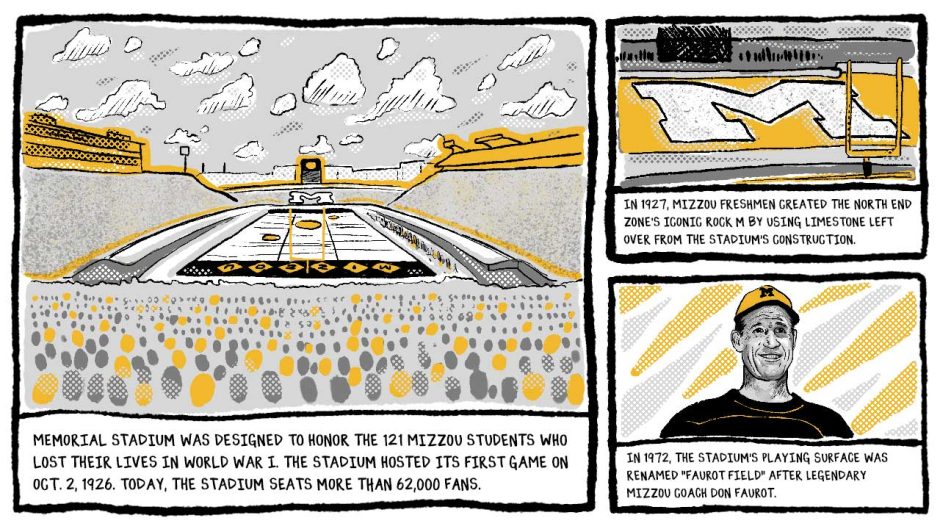
Aug. 30, 2023
Contact: Deidra Ashley, ashleyde@missouri.edu
Illustration by RJ Platto
For seven Saturdays every fall, University of Missouri faithful gather around their TVs or flock to Memorial Stadium to watch the Tigers play football. It’s a cherished tradition for black-and-gold fans across the Show-Me State and beyond. But many might not know the storied history behind the stadium’s creation.
Mizzou’s football program dates back to 1890, and early games were played at Rollins Field (which has since been renamed Stankowski Field).
Three years after World War I, Mizzou began designing a new stadium to honor the 121 MU students and alumni who lost their lives in the war. Construction on Memorial Stadium began in December 1925, and the arena hosted its first game — the Tigers against Tulane University — on Oct. 2, 1926. A year later, Mizzou freshmen used limestone leftover from the stadium’s construction to create the iconic Rock M in the north end zone.
In 1972, the field at Memorial Stadium was officially named Faurot Field in honor of Don Faurot, who coached Missouri from 1935–56 and led the Tigers to three conference championships.
Today, what was once a 25,000-seat stadium has ballooned to over 60,000. Recent updates have also been made to help streamline game day and improve the fan experience. These include better seats for the MU student section, the all-inclusive Tiger Deck on the 300 level, new food and beverage options with fan-friendly pricing, a revamped pregame show and digital parking passes.
Story written by Audrey Brown



